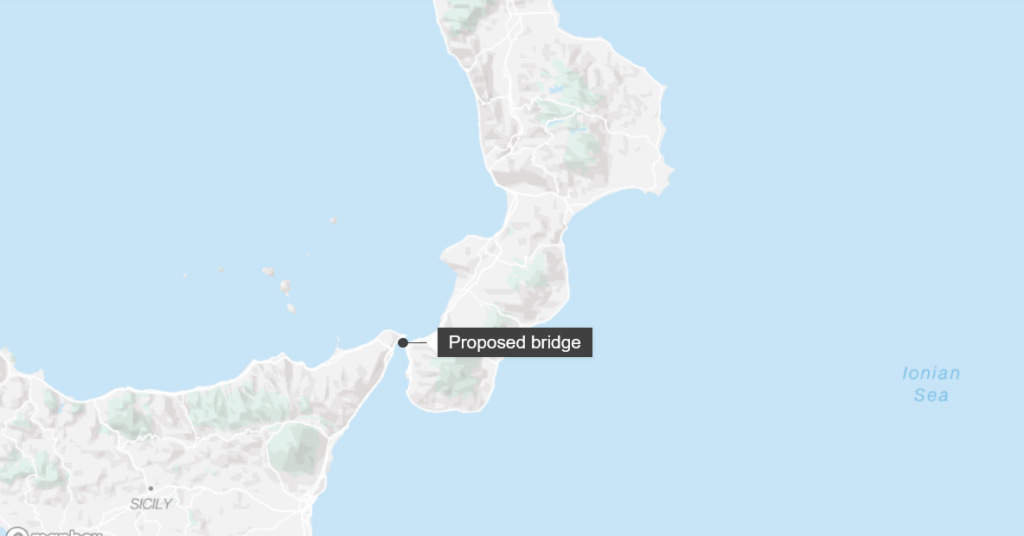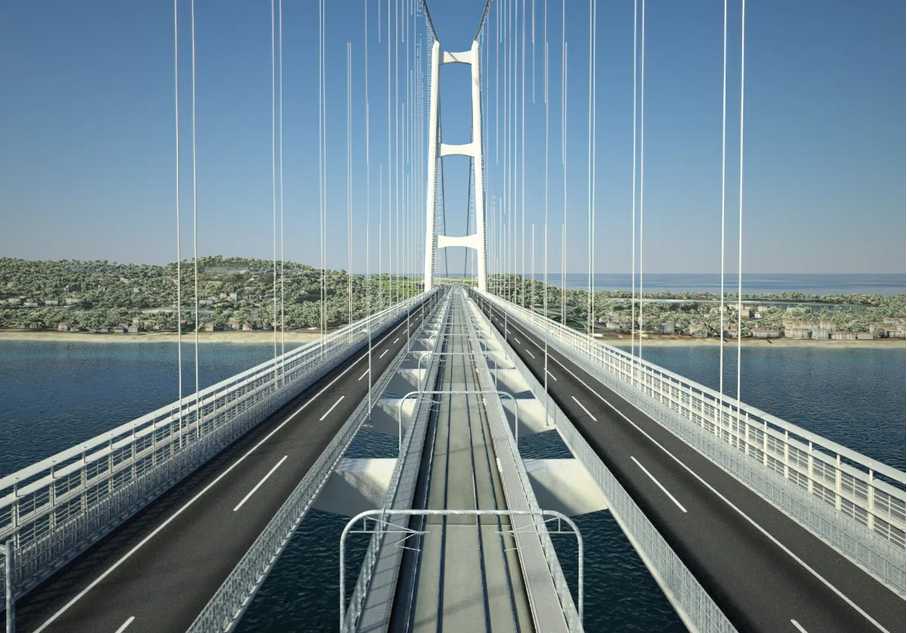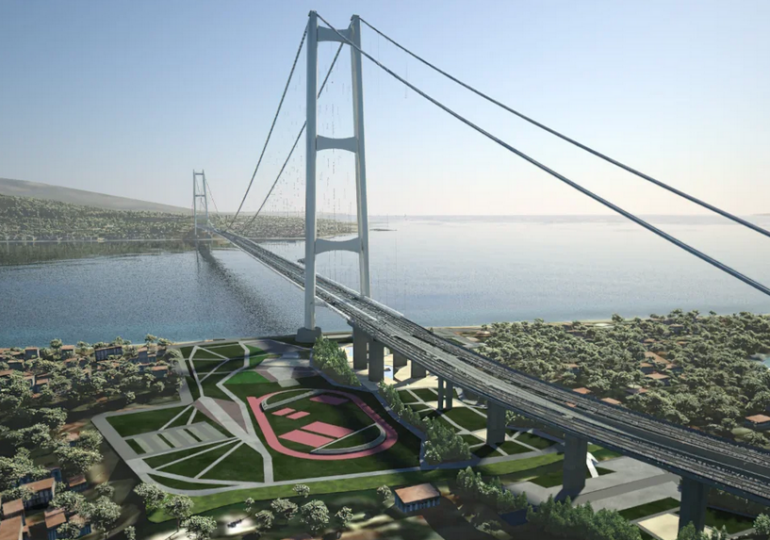This year will mark the beginning of the construction of the world’s longest suspension bridge, according to the government in Rome. It will be an unparalleled challenge that the Italian state is determined to undertake at all costs.
The bridge that will connect the island of Sicily to mainland Italy will span the Strait of Messina over a distance of 3,300 meters. However, the construction must face the intense tectonic activity in this area.
The idea of connecting Sicily to mainland Italy is not a new one. The Roman Empire, King Charlemagne, and modern Italian governments have attempted, in different eras, to move beyond the planning phase, but the costs, time required, and challenges of such construction in an earthquake-prone area have led each attempt to be abandoned before work could begin, writes Newsweek.
This time, Italy's leadership is determined to fulfill this dream of connecting Sicily to Europe at any cost. And it will be an extremely expensive dream.
How much will Italy's grand bridge cost
The cabinet of Italian Prime Minister Giorgia Meloni has revived the concept, with Infrastructure Minister Matteo Salvini being the driving force behind the project of the bridge over the Strait of Messina.
The bridge's design will spare no expense - it will be a structure for both trains and vehicles to travel over the 3.2 kilometers between the towns of Torre Faro in Sicily and Villa San Giovanni on the mainland.

Recent estimates project a cost of approximately 13.5 billion euros, equivalent to 15.3 billion dollars. A small portion of this sum will be funded by the European Union, but the contribution from Brussels, 25 million euros, covers barely half of the design costs.
Economy Minister Giancarlo Giorgetti stated that the necessary funds will be phased over several years, with the first three installments paid by 2026.
According to data from the government in Rome, just the construction phase could contribute 2.9 billion euros to the national GDP, create employment for 100,000 people and involve 300 suppliers, with the majority of these workers coming from the Sicily and Calabria regions, where unemployment rates are high, according to CNN.
If completed, the bridge over the Strait of Messina in southern Italy will become the world's longest suspension bridge, surpassing Turkey's Canakkale Bridge, which is 1,915 meters long. In fact, the Strait of Messina Bridge would be as long as the two longest suspension bridges in China combined - Yangsigang Yangtze and Nansha.
Top longest suspension bridges in the world:
- Canakkale, Turkey - 2,023 meters
- Akashi Kaikyo, Japan - 1,915
- Yangsigang Changjiang, China - 1,700
- Nansha, China - 1,688
- Shenzen-Zhongshan, China - 1,666
- Xihoumen, China - 1,650
- Great Belt, Denmark - 1,624
- Ningyang Yangtze, China - 1,560
- Osman Gazi, South Korea - 1,550
- Yi Sun-sin, China - 1,545
The bridge in southern Italy would stand at a height of around 74 meters above sea level and would allow for a navigation channel of 600 meters, enabling the passage of cargo vessels and even the tallest cruise ships. Additionally, it is designed to withstand an earthquake with a magnitude of 7.5.

Can a bridge withstand a seismic zone?
The biggest challenge for the Strait of Messina Bridge is its location. Sicily and the surrounding region of Italy are prone to seismic activities that could disrupt the construction process and the final structure.
However, Guy Nordenson, a professor of structural engineering at Princeton University, told Newsweek that the design of a suspension bridge can overcome any tectonic issues, as this type of bridge is the most flexible.
"Note that these bridges are quite flexible and can accommodate ground movement and, more importantly, tower displacements better than many buildings," Nordenson said.
The engineer drew comparisons to the Akashi Kaikyo Bridge in Japan, the third-longest in the world, which is also located in an active geological area.
"The Japanese Akashi Kaikyo Bridge is a kind of cousin to Messina, if you will, and it has to withstand earthquakes. The great Hanshin earthquake of January 17, 1995 (with a magnitude of 7.3 and the epicenter 20 km west of Kobe) moved the towers, the only structures that had been erected at that time.
Pietro Salini, CEO of Webuild, is aware of the high stakes involved. "The Strait of Messina Bridge is a huge technological challenge. 3 kilometers of bridge will be suspended over the strait (...). It is also Italy's challenge to the rest of the world," he said.
When will the work begin and how long will it take
The project has sparked controversy in Italy, but the Italian government remains committed to starting the work by the end of this year, with a completion date set for 2032.
In early April, builder Webuild announced that work would commence by the end of 2025. "I hope to be there and succeed in crossing it together with the entire team by the end of 2032," said Webuild CEO Pietro Salini.
However, Nordenson believes it is difficult to anticipate a definitive date for the start or completion of the work. He likened this project to the MOSE barrier, designed to protect Venice from floods: "It's quite difficult to predict the completion date. The MOSE barrier in Venice was also a priority of the Berlusconi government and took several decades."
"In addition to the quality of engineering and design, the cost is tied to the work schedule and the level of transparency or corruption that may occur, as well as the slow wheels of bureaucracy. It requires a rare combination of design excellence, honest and public execution, and respect for craftsmanship and the work involved," the expert detailed.
T.D.

